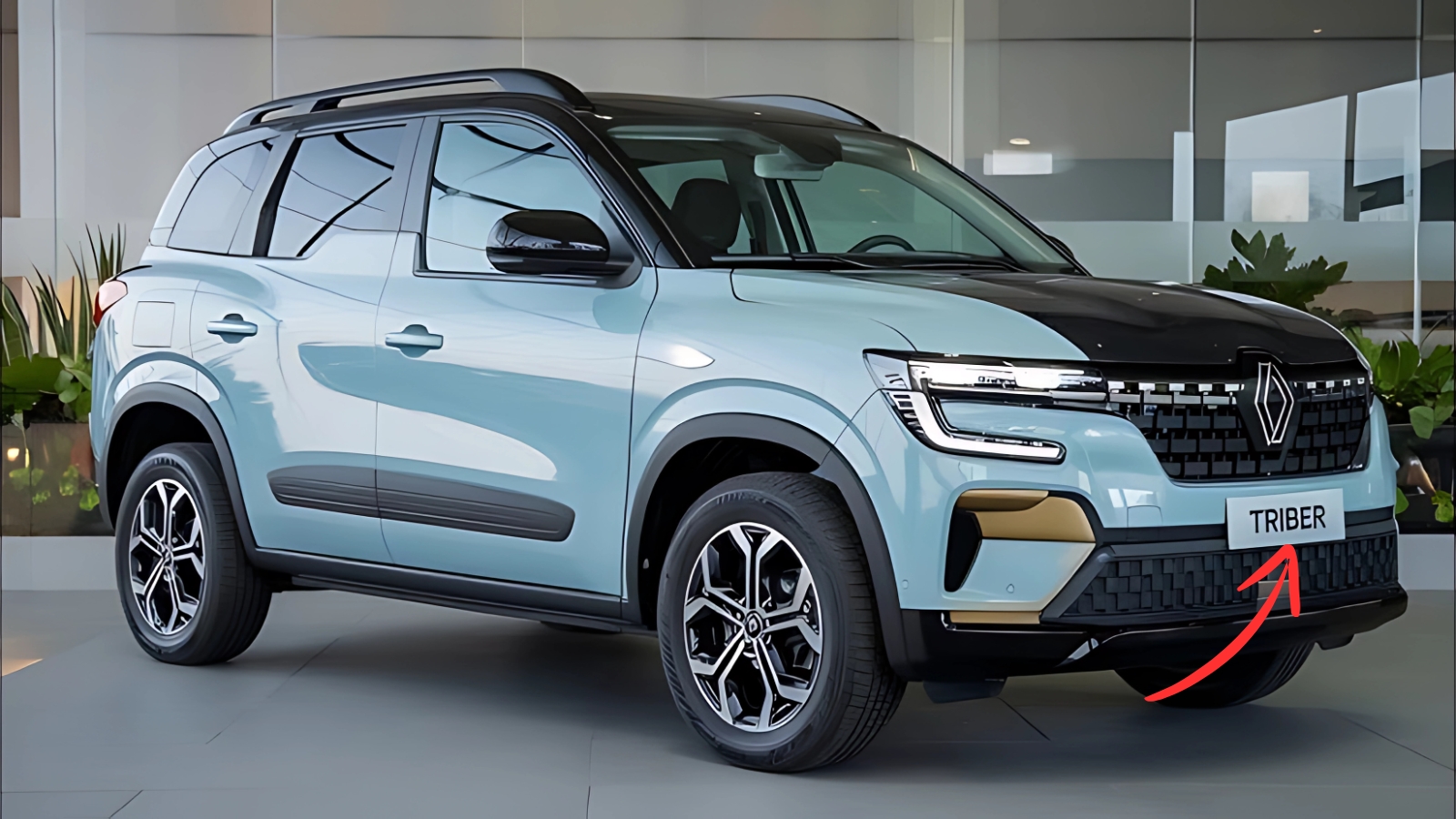Renault Triber : There’s something endearing about a car that doesn’t try to be everything to everyone. The Renault Triber has spent the last five years quietly proving that sometimes the best solutions come from the most unexpected places. While other manufacturers chase premium segments and electric futures, Renault doubled down on solving a distinctly Indian problem: how do you fit seven people in a sub-four-meter package without breaking the bank?
The Facelift Moment: Evolution Over Revolution
As July 23rd approaches, anticipation builds around what many consider the Triber’s most significant update since its 2019 debut. The facelift isn’t about dramatic reinvention – it’s about polishing what already works remarkably well.
Early glimpses suggest a front end that’s been thoughtfully redesigned rather than completely reimagined. The new grille design speaks to contemporary Renault language while the LED daytime running lamps add a premium touch that was previously missing. These changes feel natural rather than forced, like the Triber has simply grown into its own skin.
The rear treatment follows a similar philosophy. Updated tail-lights and a refreshed bumper design provide visual interest without alienating existing owners who chose the Triber for its honest, unpretentious character. Sometimes restraint demonstrates more confidence than radical change.

Interior Transformation: Where Function Meets Comfort
Perhaps the most meaningful improvements happen inside the cabin, where families spend their actual time. The dashboard receives a comprehensive update with new trims and materials that address one of the few criticisms leveled at the original design.
The inclusion of an 8-inch touchscreen across multiple variants represents genuine democratization of technology. Previously, features like Android Auto and Apple CarPlay felt like luxury additions. Now they’re becoming standard equipment, acknowledging that connectivity isn’t optional in modern family life.
Power windows across all four doors might seem like a basic expectation, but their standard inclusion across the range shows Renault’s commitment to eliminating the artificial hierarchy that often plagues budget vehicles. Every passenger deserves the same level of convenience, regardless of seating position.
Heart and Soul: The Unchanged Engine Story
Under the bonnet, the familiar 1.0-liter three-cylinder engine continues its duty. Producing 72 horsepower and 96 Nm of torque, these figures won’t excite performance enthusiasts, but they tell a different story entirely.
Real-world owners consistently report fuel economy figures that make larger, more powerful vehicles seem wasteful by comparison. One owner’s account of achieving 18 kmpl on highway runs with six occupants aboard demonstrates the engine’s efficiency credentials better than any laboratory test.
The five-speed manual gearbox provides direct engagement that many modern automatics lack, while the AMT option serves buyers who prioritize convenience over involvement. Both transmissions suit the Triber’s unhurried character perfectly.
Space Magic: The Triber’s Defining Achievement
Here lies the Triber’s true genius – its ability to transform space in ways that seem to defy physics. The modular seating system isn’t just a marketing gimmick; it’s a genuine solution to the varied needs of Indian families.
Remove the third row, and boot space expands to over 600 liters – enough for extended family trips or major shopping expeditions. Install it, and seven people can travel together comfortably, something impossible in vehicles costing twice as much.
The 2636mm wheelbase maximizes interior volume while staying within sub-four-meter taxation benefits. This engineering achievement creates real value rather than just impressive specifications.
Ownership Reality: Stories from the Road
Customer experiences reveal the Triber’s character more clearly than any professional review. One Delhi-based owner shared their 2000-kilometer journey covering multiple cities, achieving remarkable fuel economy while carrying six passengers and luggage. Another family praised the vehicle’s urban maneuverability, noting how easily it navigates crowded markets and narrow parking spaces.
These aren’t polished testimonials – they’re honest accounts from people who depend on their Triber for daily transportation needs. The consistent themes of reliability, efficiency, and practicality speak to engineering priorities that favor substance over style.
Hyundai Grand i10 – All new model launch with premium features
Market Context: Standing Alone in a Crowded Field
The Triber occupies a unique position in Indian automotive landscape. While Nissan plans a competing MPV for 2026, currently no direct rival offers similar space and capability at comparable prices. This exclusivity reflects both market opportunity and the challenge of profitable small-car manufacturing.
Starting around ₹6.15 lakh and extending to approximately ₹9 lakh for the top variant, the Triber provides seven-seat capability where competitors offer five seats maximum. This value proposition remains compelling as family structures evolve and transportation needs become more complex.
Renault Triber Future Trajectory: Building on Success
The upcoming facelift demonstrates Renault’s confidence in the Triber formula. Rather than chasing segment trends or attempting wholesale changes, updates address specific customer feedback while preserving core strengths.
This approach suggests maturity – understanding that successful products improve incrementally rather than revolutionizing constantly. The Triber’s continued relevance proves that solving real problems trumps following fashion trends.
For Indian families seeking practical transportation solutions, the refreshed Triber represents evolution guided by experience rather than marketing departments.